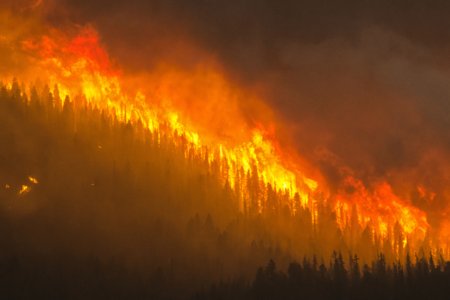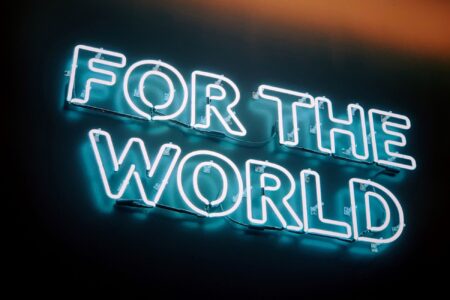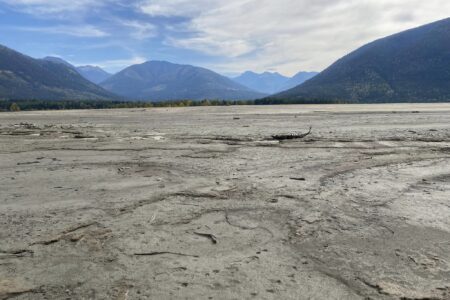Coffee: is the black stuff as green as it should be?
By George Blacksel, The Ecologist.org
The world’s second most tradable commodity after oil; coffee growing and processing has proven itself to be a lucrative industry.
The burgeoning coffee culture that sprang up over the last few decades has led to overwhelming success for handful of coffee franchises and a massive spike in supermarket sales.
Of the high street coffee chains, Costa, Starbucks, Cafe Nero and Pret A Manger have cornered the lion’s share of the profits. While no one is denying their right to make a buck, the big question is whether the profits these franchises are making are trickling down to the people actually growing the beans?
And how green are they really? Is the high street coffee industry one we should buy into or should we be avoiding it altogether?
Traditionally, complexities within the supply chain have meant that the 100 million people growing coffee around the world have been excluded from the huge profit making potential of coffee.
On average, third world coffee farmers receive a paltry 10 per cent of the eventual retail price. As competition among growers – 70 per cent of whom are smallholders – has stiffened; a combination of price reductions and undercutting has left them exposed to the fluctuations of the volatile coffee market.
Along with the negative effect this has had on living conditions, the drive for increased output has had a knock-on effect on the environment as well, with monocropping and sun grown coffee now the norm. And given that most coffee growing regions are also home to some of the most delicate eco-systems on earth; the potential for serious damage is high.
So where does the UK consumer come in? Despite our dedication to tea and our low global ranking (47th) in the coffee consumption per capita stakes, last year, British consumers spent over £730 million on coffee and swilled down approximately 500g of the black stuff each.
What’s more, our dedication to the coffee bean has seen the number of high street coffee outlets quadruple over the last 10 years. Along with greater coffee consumption has come greater awareness of the problems, with more than 6.4 million cups of Fairtrade coffee consumed each day, according to the Fairtrade Foundation.
Organic coffee sales are also increasing and a whole host of brands, from Clipper to Good African, have sprung up to provide an ethical alternative. Nevertheless, the Fairtrade six million cups pales in comparison to the overall total, which comes in at approximately 70 million cups of coffee drunk per day.
The message is clearly getting through but just as obviously, it’s not getting through to everyone. So what does conventional coffee production mean for the planet?
The biggest source of environmental damage where coffee is concerned comes during the production of the beans themselves. The global surge in demand has had a profound effect on the growing methods used with massive implications for sustainability.
Coffee grown by traditional means has been cultivated under a shaded canopy of trees, which provide a valuable habitat for indigenous animals and insects as well as preventing topsoil erosion and removing the need for chemical fertilisers. But thanks to market demands, this innocuous form of agriculture has been superseded by ‘sun cultivation’.
Originating in the 1970s, sun-grown coffee is produced in plantations with no forested canopy, which has resulted in fertilisers becoming a necessity and has had a seriously detrimental effect on biodiversity.
Farmers have been positively encouraged to replace their old, and supposedly inefficient, farming methods with sun cultivation and as a consequence, 2.5million acres of forest in Central America alone have been cleared to make way for coffee farming.
This link between coffee growing and deforestation was recently highlighted by the WWF, who pointed out the fact that 37 of the 50 countries with the highest deforestation rates are also coffee producers.
But can Fairtrade and organic coffees make a difference? Certification standards differ in their focus and each comes with their own strengths and weaknesses. Starbucks focus on Fairtrade, while Costa source their coffee from Rainforest Alliance certified growers.
So what’s the difference? Fairtrade is one of the most widely applied sustainable systems in the coffee marketplace and represents approximately 27 per cent of the overall market share.
“[The Fairtrade] Foundation’s mission is to reduce poverty through trade and it is unique in offering a structured minimum price and premium guarantee for producers,” explains Kate Lewis, Business Development Manager at the Fairtrade Foundation. “This guarantee acts as a security blanket for the farmers of a crop that is otherwise prone to price volatility.”
Fairtrade also cuts out the middleman, which gives farmers’ cooperatives the chance to deal directly with the retailers and ensure that coffee is bought at a price commensurate with the cost of production.
The extra proceeds received by farmers then go towards investment in social and business development projects such as scholarship programmes, healthcare services and quality improvement training. What’s more, Fairtrade provides a buffer against market fluctuations and ensures that farmers’ get a living wage regardless of market conditions.
“Standards have been adapted over the years to ensure that they remain relevant and beneficial to producers,” adds Lewis. Most recently, this has meant an increase in the Fairtrade minimum price, which now stands at $1.31 per pound for Arabica coffee plus the Fairtrade premium of 10 cents.
Despite the proven benefits, some critics have questioned the effectiveness of Fairtrade while the presence of the in-house collectives operated by some of the bigger brands have also caused disquiet.
“Fairtrade is a starting point but not an end in itself,” says Cafedirect’s Whitney Kakos. “Our business model is to go over and above those requirements.”
Cafedirect, a brand born during the coffee crisis of 1989 when prices hit rock bottom, is a pioneering company that was the first brand in the UK to carry the Fairtrade mark and pursues a Producer Partnerships Programme (PPP) in conjunction with its Fairtrade guarantee.
The brand currently reinvests over 50 per cent of its income into the coffee growing communities and in terms of fresh coffee for the home Cafedirect is one of the best brands out there for the environmentally and ethically conscious. But if you can go above and beyond the standards expected by the Fairtrade Foundation, what about the other big coffee certification scheme: the Rainforest Alliance?
While the Fairtrade Foundation focuses on the ethical side of coffee production, the Rainforest Alliance is more preoccupied with environmental concerns. There is no guaranteed price for the growers; instead, the organisation aims to ‘conserve biodiversity and ensure sustainable livelihoods by transforming land use practices, business practices and consumer behaviour.
To be certified, growers need to achieve a standard set by the Sustainable Agricultural Network (SAN) and adhere to a set of ten guiding principles. The SAN, for instance, forbids deforestation, and no farm is certified if there is evidence of deforestation after 2005.
Those qualifying for the certification ‘embark on a programme of re-forestation, developing both shade grown coffee and foresting non-productive areas of their farms.
The Rainforest Alliance certification system is the choice of key players within the coffee industry with companies such as Costa, the high street coffee chain with the largest market share in the UK, and freeze-dried coffee giant, Kenco, now both sourcing 100 per cent of their beans from Rainforest Alliance certified farms.
The seal has itself, on occasions, been branded as misleading due to its usage on products containing just 30 per cent certified beans. In response to such criticisms, Stuart Singleton-White, Senior Communications Manager at the RA, says that if a company uses the seal at the 30 per cent level, they do so under two conditions: “First, they are required to be fully transparent and second, that they have made a commitment to move to 100 per cent within an agreed time period.”
So what about the third of the three big coffee chains – Pret A Manger? According to Pret’s David Brown, the company is doing their best to achieve its goals of sustainability and a fair price for the farmer, but adds that although they “would ideally like to achieve all these goals from one certification, but it doesn’t yet exist.” To date, the solution the franchise has come up with is to operate a three-way approach to certification, choosing coffee beans that are organic, Fairtrade and Rainforest Alliance certified.
When asked what changes she would most like to see in the coffee industry in years to come, Cafedirect’s Whitney Kakos replied that she would like the ‘decision making process of business to match their rhetoric they use in the public eye.’
In one sentence, she’s nailed the main issue. As it stands, many of the big coffee brands have convoluted supply chains, which make it impossible for them to have any real idea of what’s going on down the line – a fact that makes a mockery of ethical and green claims.
The bar has been set high by pioneering coffee retailers such as Cafedirect, but it remains to be seen whether the remainder, including coffee giant Nescafe, will follow.
“One day, certification will be the norm and not the exception,” thinks Stuart Singleton-White. Will it? Given the changes that have taken the coffee industry by storm over the last few decades, it’s certainly a possibility but there is still a long way to go for the UK’s coffee drinking habit to prove itself a truly sustainable one.























Comments